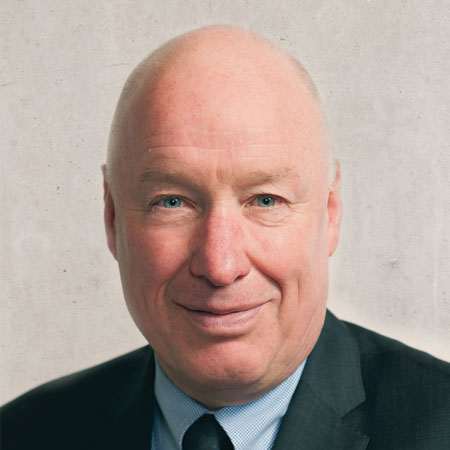Profitable Pharming Expands Ruconest Potential And Resurrects Pompe Pipeline
Executive Summary
Dutch rare disease company Pharming talked to Scrip about turning a profit for the first time in the company’s history, finally restocking the pipeline in potentially blockbuster indications, and turning its attention back to Pompe disease after 20 years in the cold.
The last two years have been transformational for the Leiden-based specialty company Pharming Group NV. In 2016, it had effectively lost control of the commercialization of its intravenous hereditary angioedema (HAE) product, Ruconest, a recombinant human C1 esterase inhibitor (rhC1INH), produced in rabbits, through a series of licensing deals on both sides of the Atlantic, but now its fortunes have turned.
The drug was approved by the US FDA and in Europe in 2014, but Pharming did not market the drug in either territory, as Valeant Pharmaceuticals International Inc and Swedish Orphan Biovitrum AB (SOBI) held the respective rights. (Pharming had originally partnered Ruconest in North America with Santarus Inc.., which was acquired by Salix Pharmaceuticals Ltd. in 2014. Salix was then itself acquired by Valeant the following year.)
Two years ago, Pharming renegotiated its license with SOBI to regain rights to market Ruconest in 21 countries in Western Europe, North Africa and the Middle East, and paid $60m to reacquire the rights from Valeant to commercialize Ruconest in North America. (Also see "Pharming Regains Rights To Ruconest, Seizing More Control Over Its Destiny" - Scrip, 9 Aug, 2016.)
This series of plays by Pharming are now producing their reward, with its latest financial statement in October showing product revenues up by 74% to €98m, and the Dutch company is now working toward restocking its pipeline. (Also see "Pharming Turns A Profit After Reclaiming Ruconest" - Scrip, 17 May, 2018.)
“The history of Pharming has been mixed,” concedes CEO Sijmen de Vries in an interview with Scrip. The company’s current management team have turned the company into a profit-making enterprise for the first time in its history. “The first 29 years are the worst,” jokes CFO Robin Wright.
Lifecycle Management
The company is now looking forward product-wise and is investigating subcutaneous and intradermal forms of Ruconest, in a concentrated format, for HAE prophylaxis. Ruconest is currently used in the acute setting, and when the FDA showed interest in Phase II data the company had on its use in HAE prophylaxis, it gave the company “a bit of a problem”, recalled Wright, because it was already turning its focus to more competitive routes of administration for both acute treatment and prevention. Using the current formulation twice a week as a preventative measure would not be "ethically defensible" for patients with relatively low levels of attack because of its cost to patients and payers, he said.

This problem was not unique to Ruconest, a report by the Institute of Clinical and Economic Review (ICER), published on Nov. 15, compared the cost effectiveness of prophylaxis HAE treatment of three of Ruconest’s rival therapies; Shire PLC’s newly approved monoclonal antibody Takhzyro (lanadelumab) and its C1 inhibitor Cinryze, alongside CSL Behring’s Haegarda.
The report concluded that while long-term prophylaxis with either of the C1 inhibitors or lanadelumab resulted in fewer acute attacks and improved quality of life for people living with HAE, current pricing of all three treatments exceeds traditional cost-effectiveness thresholds from $50,000 to $150,000 per quality-adjusted life year (QALY) gained. CSL’s Haegarda required the smallest price reduction (28%) to be within traditional thresholds, followed by Takhzyro (34%) and Cinryze (60%).
On the best available treatment today, a patient would need around $550,000 to $600,000 worth of prophylaxis treatment, and a further $100,000 worth of acute treatment for a total of $650,000 to $700,000, Wright explained. By contrast, an average patient treating themselves with the best acute therapy only would cost about $240,000 to $250,000, and they would need far fewer injections. “Ethically speaking its absolutely black and white. Prophylaxis is not a good idea for the system, and not a good idea for the patient unless they are very badly affected, by which we mean four to five attacks a month,” he said.
While Ruconest in its current iv formulation could work on a preventative scale, it would also cost north of $700,000 dollars per year, and de Vries said the company was not keen on doing this “to the system or the patients”. However, an intradermal or subcutaneous version of Ruconest approved for prophylaxis could be delivered at a very different price point which would make a lot more sense than acute therapy on its own.
Fortunately, Pharming's Phase II prophylaxis study with the approved version did not have the data richness the FDA was looking for to proceed with a prevention indication. This “solved a problem” for a company keen to stick to its strategy of developing its new administration routes, which also include intramuscular (Phase I for use in the acute setting as a more convenient option).
Expanded Indications
But it has other plans for the product too. While gaining a bigger seat at the HAE table is a priority for the group, what is “even more exciting”, according to de Vries, is its potential in other indications that could benefit from a C1 esterase inhibitor, said Wright and De Vries, describing C1 as the “body’s own handbrake.”

Pre-eclampsia and contrast-induced nephropathy are Pharming’s immediate focus because of the unmet medical need, with both of these indications being potential blockbusters for the company.
In developed countries, about 3-4% of pregnant women develop pre-eclampsia, with cases totalling around two and a half million a year, with each of those patients needing 10-12 weeks of treatment. “It’s a significant market,” said de Vries, “compared to anything like HAE.” With clinical trials starting in 2019 for both CIN and pre-eclampsia, de Vries hopes that in the long term, this will produce “a very significant upside in what we can produce in sales.”
“We’d have done it earlier if we’d had the money,” said Wright, adding that if the clinical data are not positive in either of these prioritized indications they can be replaced “in a heartbeat” by disease areas such as meningitis or septic shock, which will be taken forward in the future anyway, “as funds allow”.
Resurrected Pipeline In Pompe
Another area of historial interest that Pharming now has the funds to pursue is Pompe and Fabry disease, and it has a alphaglucosidase candidate drug that the company is “jumping up and down to get it ready and into the clinic sometime in the next year,” explained de Vries.
Pharming has history in Pompe disease, partnering with Genzyme Corp. back in 2001. This collaboration ended badly for Pharming when it ran out of money and had to hand the asset to Genzyme to avoid bankruptcy. “Genzyme thought it was a bit too esoteric to continue with the rabbits,” said de Vries. “They thought their own drug reactor would do the job, and it did in their defense, but it is a suboptimal product.”
So Pharming is starting from scratch with an alphaglucosidase from its Transgenic Production Technology Platform. “We already know it is much closer to natural than [Genzyme’s marketed Pompe product] Myozyme and Lumizyme,” said de Vries, explaining that the more natural the product, the less immunogenicity is created in the patient.
“They tend to run perfectly well for about 12-14 weeks and then they become refractorate of the drug,” said Wright. Meaning that only about 15-20% of patients are able to stay on drug for any length of time. “The expanded dose is 500g infusion for six hours every two weeks,” he explained. “So there is a big advantage in having a version that is essentially natural alphaglucosidase, in all probability we will be able to reduce the dose and treat a lot more of the refractory patients, which multiplies the size of the market by several factors.”
Pharming intends to begin a Phase I/II trial for Pompe in the first half of 2019, and for Fabry’s Disease in the second half of 2020.
Everything that Pharming is currently working on will launch after 2020, so it is also looking for an opportunity for additional near-term revenue. It is actively looking to buy in additional assets in rare disease indications. “It’s about leveraging our commercial infrastructure and closing the gap in the pipeline,” de Vries concluded.
